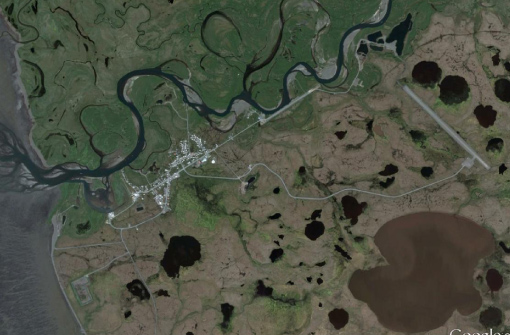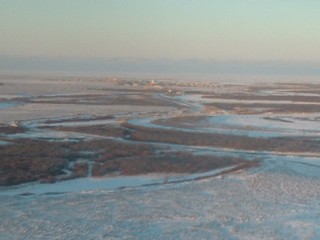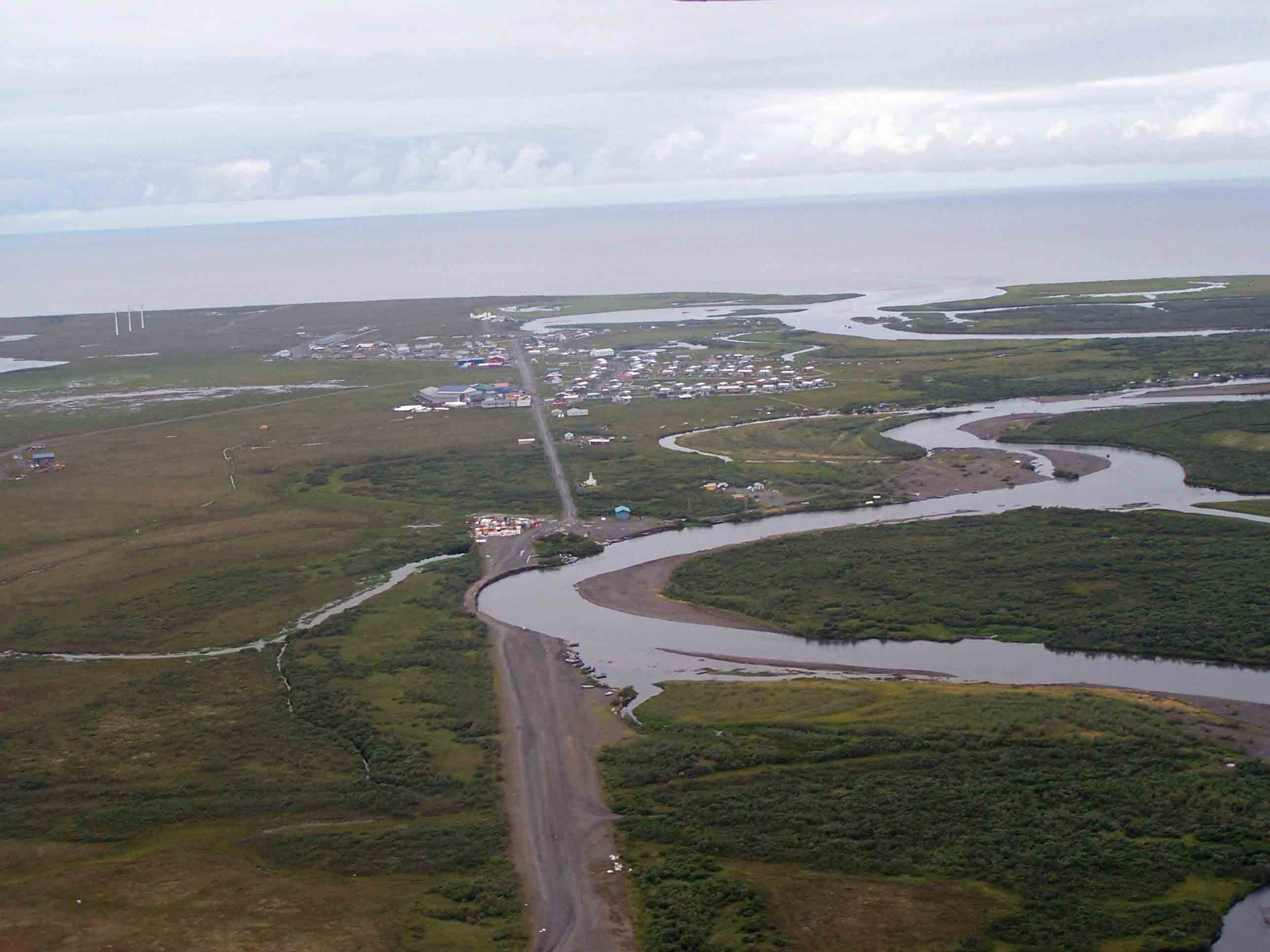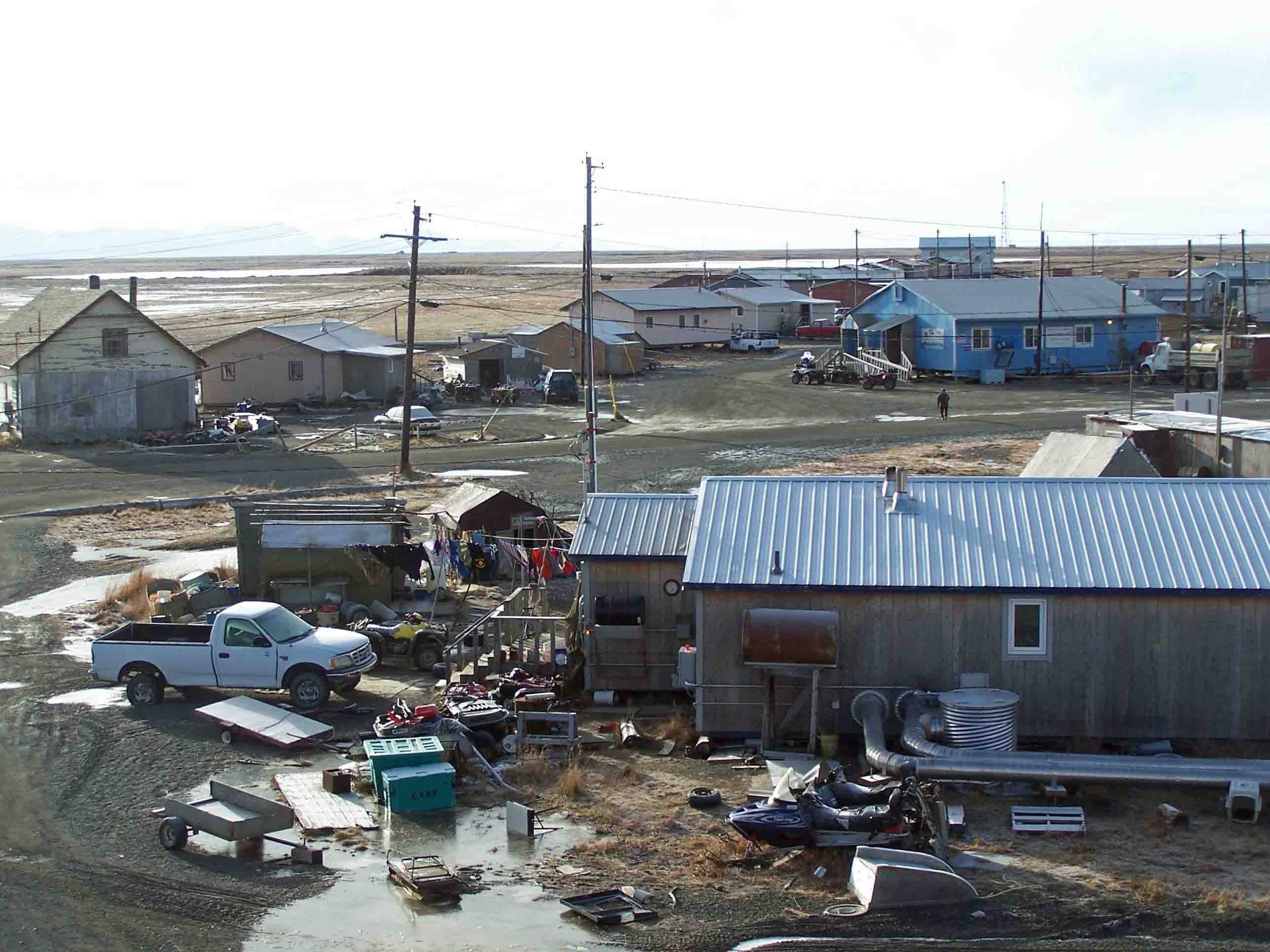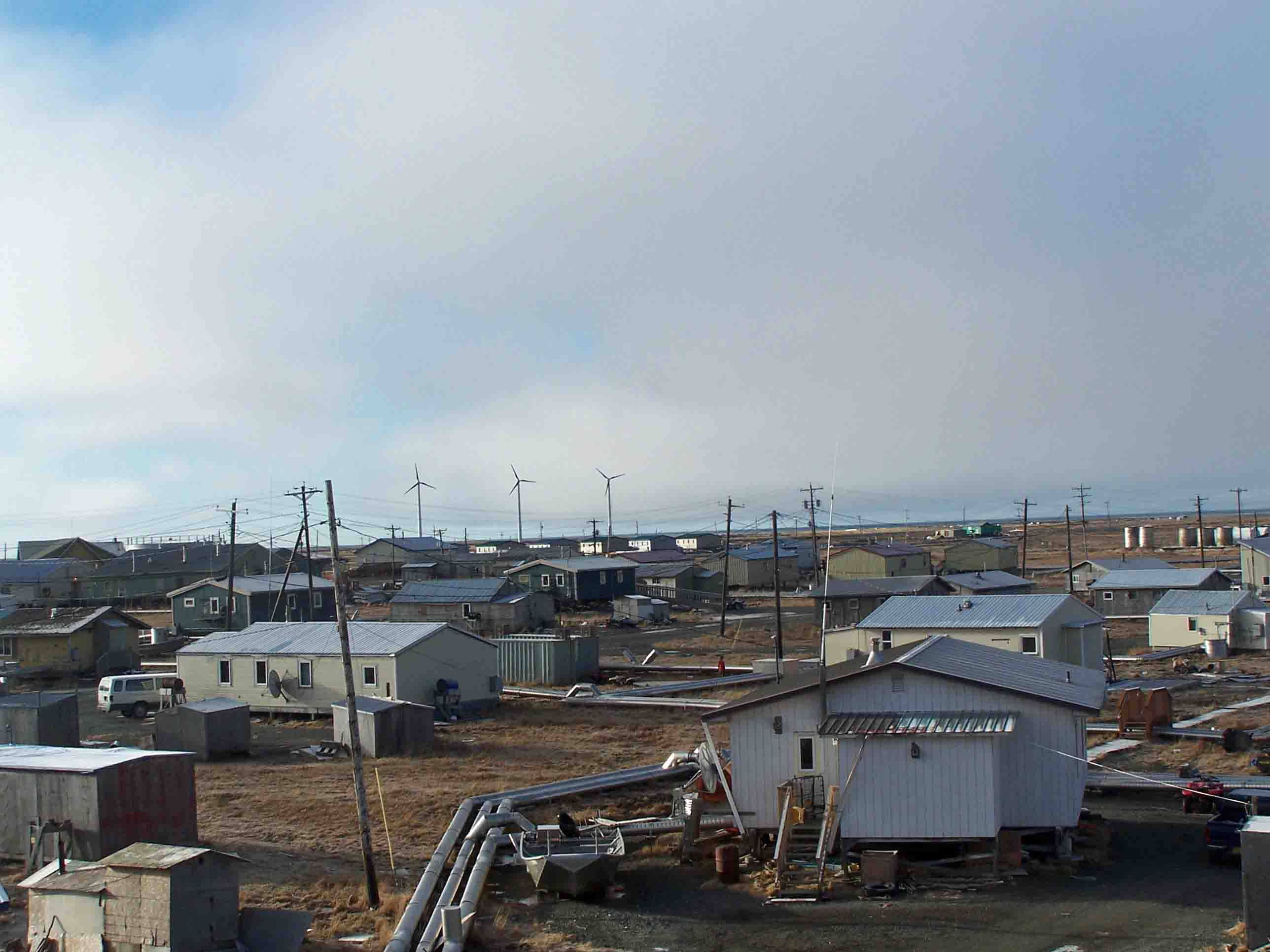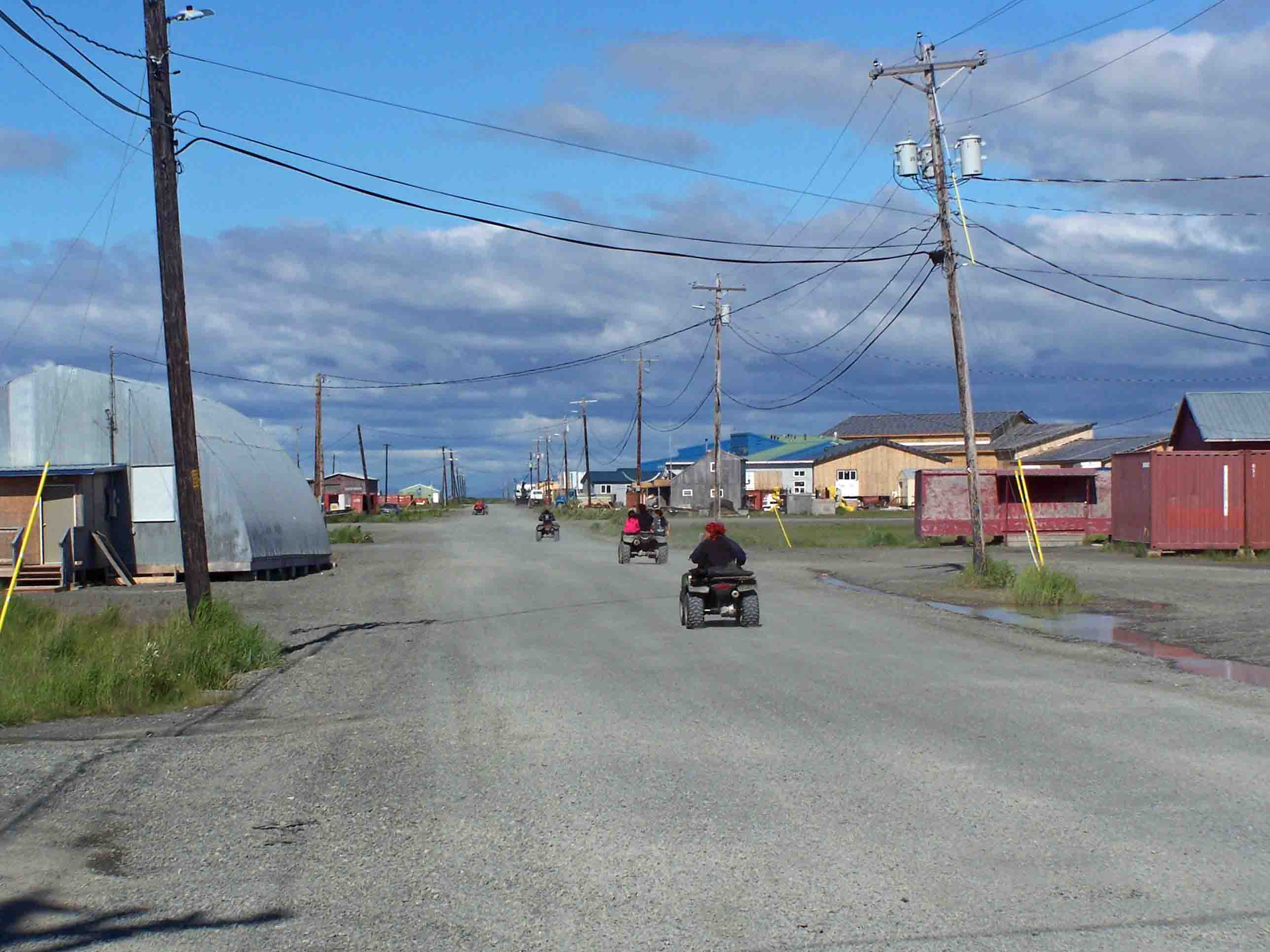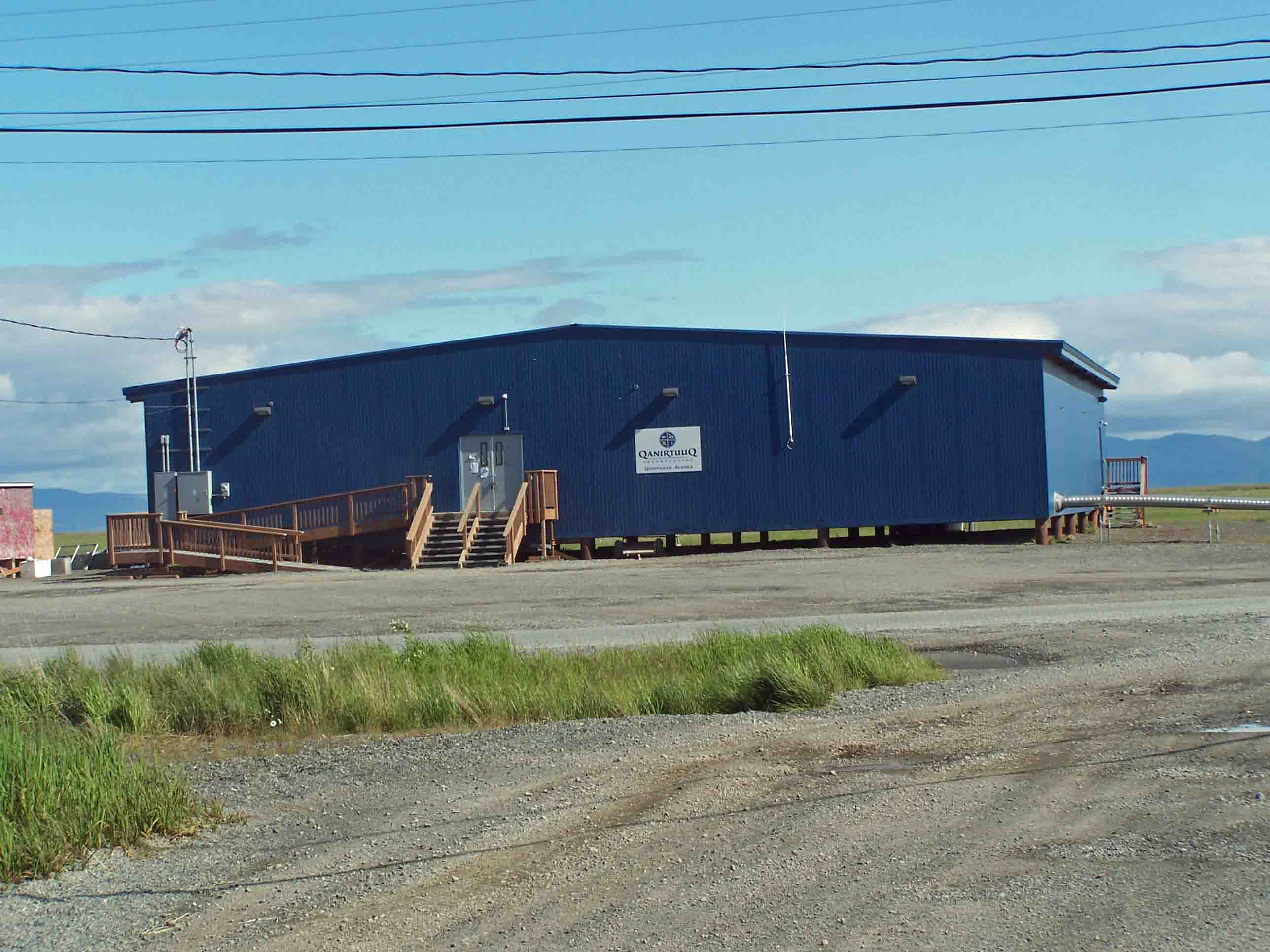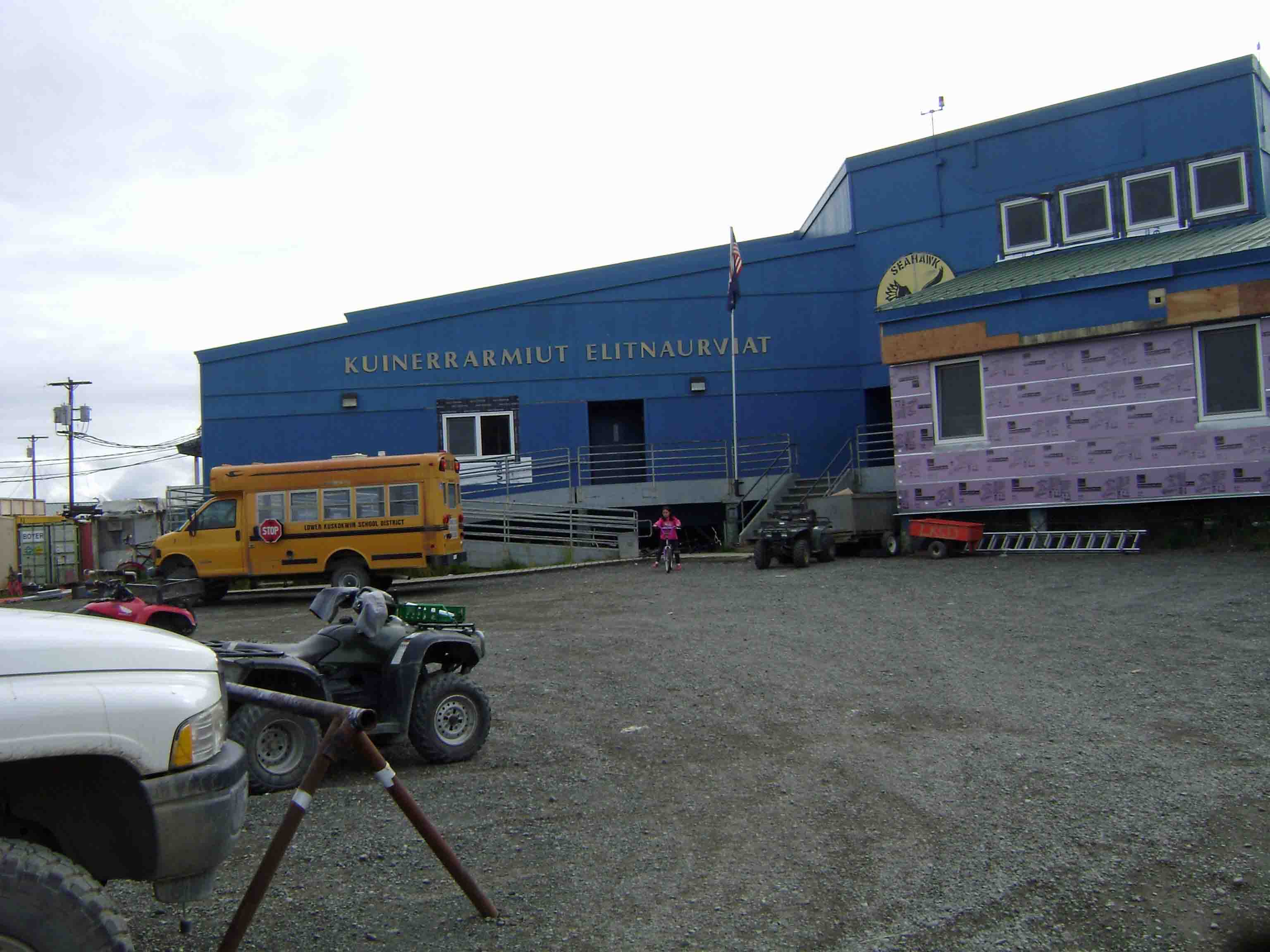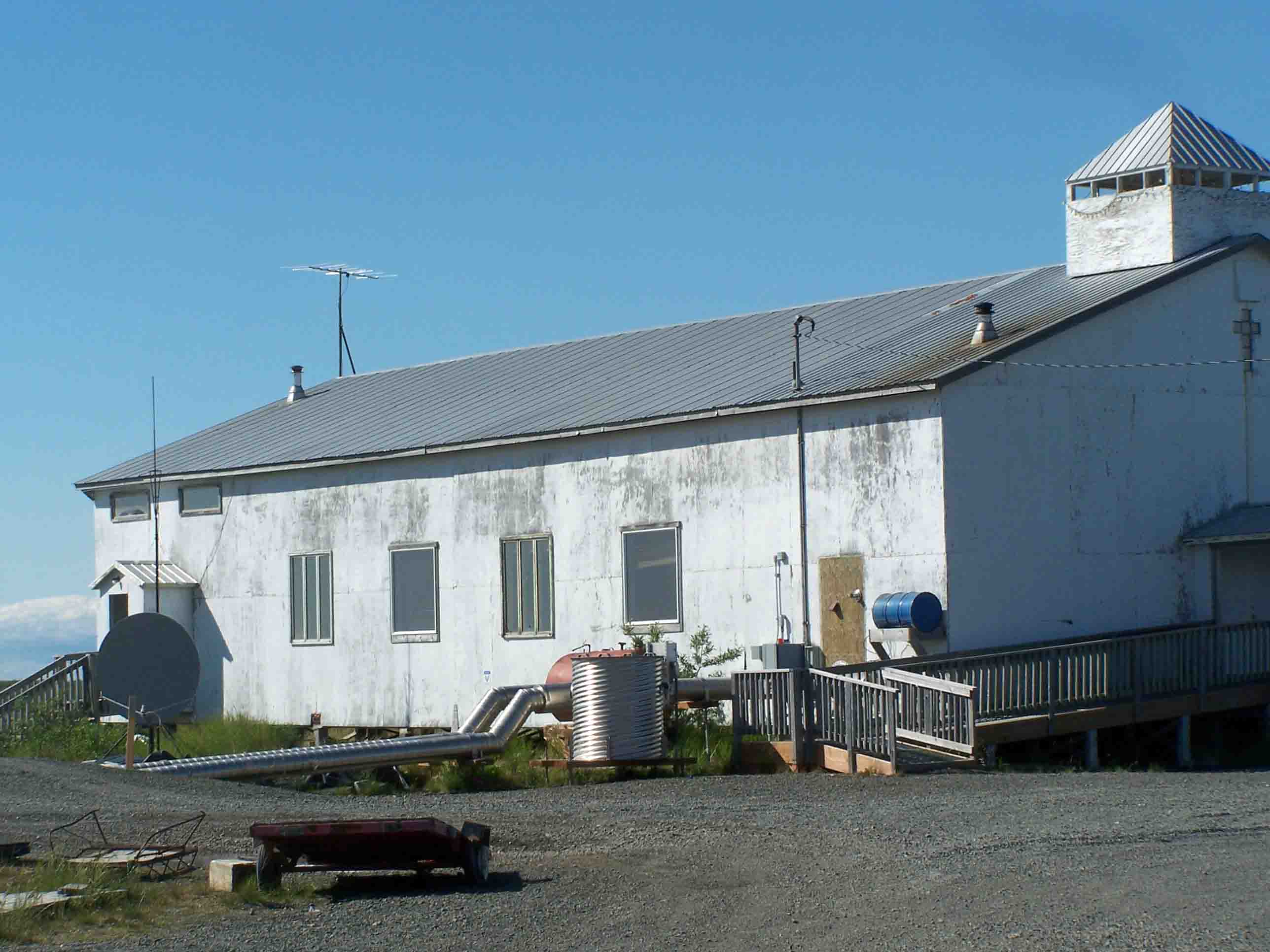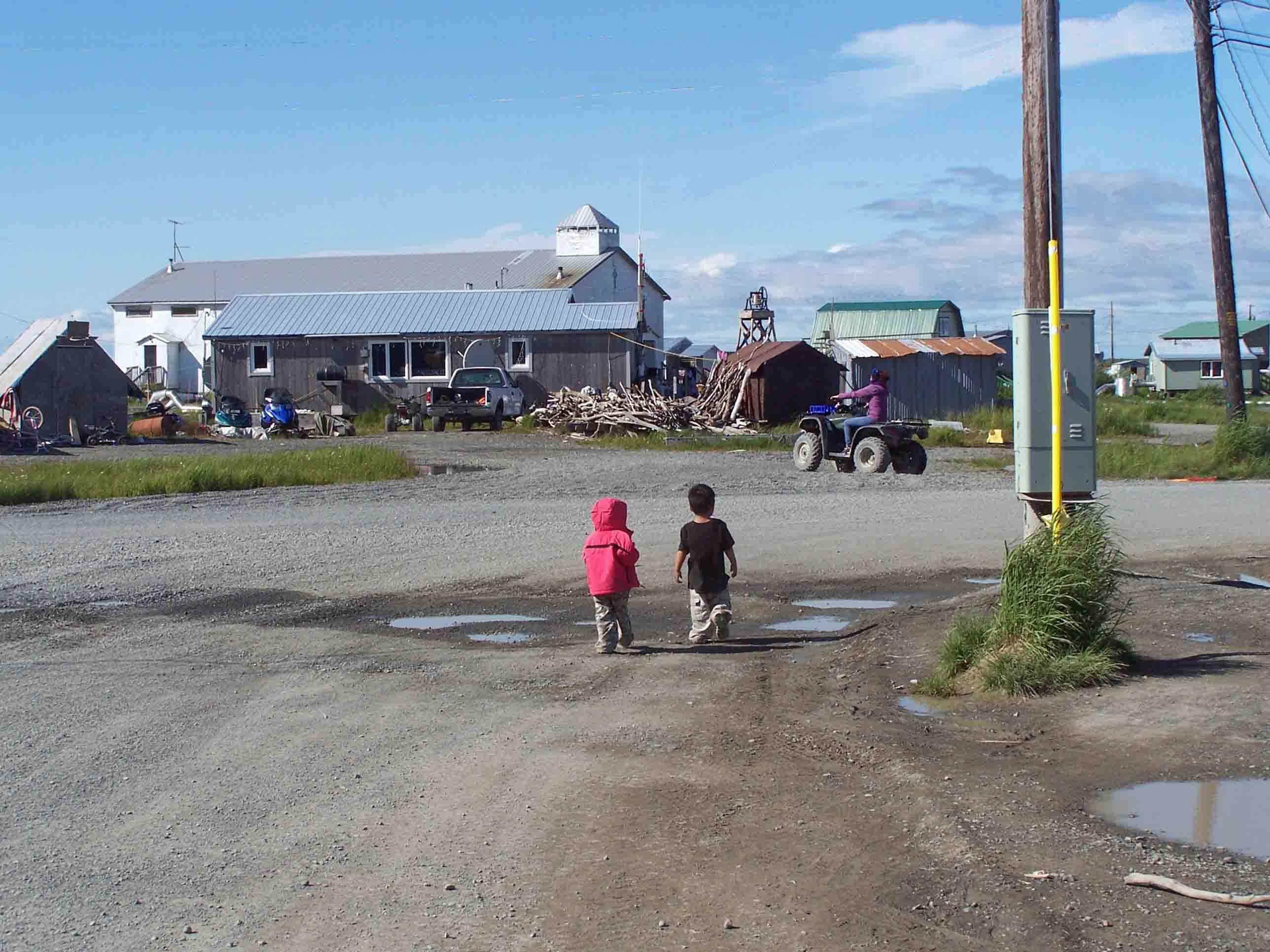Village Name: Quinhagak
(Part of the I-AM Radio Network)
Translator Status: The station was originally installed on July 25th, 2007, as a satellite-fed translator repeater for KIAM in Nenana. In 2014 the resources became available to convert the station to retransmit KYKD in Bethel, a station much more geographically and culturally connected to Quinhagak than KIAM, some 500 miles away in the interior of Alaska. During February, tests indicated that the KYKD signal could be received adequately off the air using a high-gain directional antenna. Unfortunately, in June when the conversion was attempted, the signal was no longer strong enough to use, apparently becasue of the seasonal shift to summer atmospheric conditions. The conversion was finally completed on August 19th, 2014, when the KYKD team installed powerful signal filtering and amplification equipment. K232DW now receives the KYKD signal directly from Bethel at 100.1 MHz and "translates" it to 94.3 MHz for rebroadcast to the village and surrounding area.
Location: Quinhagak is on the Kanektok River on the east shore of Kuskokwim Bay, less than a mile from the Bering Sea coast. It is 71 miles south-southwest of Bethel. The community lies at approximately 59.75° North Latitude and 161.92° West Longitude.
The image below shows the village of Quinhagak and the dark sinuous line of the Kanektok River flowing into the the Bering Sea to the west (left) of the village. Note that at the time this image was taken, the river was cutting into the north side of the old airport runway. The new and larger runway which is now in use is seen a couple of miles to the east of the village.
Climate: Quinhagak is located in a marine climate. Precipitation averages 22 inches, with 43 inches of snowfall annually. Summer temperatures average 41 to 57, winter temperatures average 6 to 24. Extremes have been measured from 82 to -34.
Culture: The community is primarily Yup'ik Eskimos who fish commercially and are active in subsistence food gathering. The sale, importation or possession of alcohol is banned in the village.
Indigenous Language: Central Yup'ik
Federally Recognized Tribe: Native Village of Kwinhagak, P.O. Box 149, 99655, telephone 5907-56-8165, and the local native corporation is Qanirtuuq, Incorporated, P.O. Box 69, 99655, telephone 907-556-8289.
2010 Census Data: Total population was 669 persons, consisting of 347 males and 322 females. The median age was 29 years. Estimated population in 2013 was 690 persons.
| Population by Race | Value | Percent |
|---|---|---|
| White | 15 | 2.24 % |
| American Indian and Alaska Native Alone | 625 | 93.42 % |
| Black or African American | 0 | 0.00 % |
| Asian alone | 0 | 0.00 % |
| Pacific Islander alone | 3 | 0.45 % |
| Other alone | 1 | 0.15 % |
| Two or More Races | 25 | 3.74 % |
| Housing Units | Value |
|---|---|
| Total Housing Units | 187 |
| Occupied Housing (Households) | 165 |
| Vacant Housing | 22 |
| Vacant Due to Seasonal Use | 4 |
| Owner-Occupied Housing | 134 |
| Renter-Occupied Housing | 31 |
| Households | Value |
|---|---|
| Total Households | 165 |
| Average Household Size | 5 |
| Family Households | 138 |
| Non-Family Households | 27 |
| Pop. Living in Households | 669 |
| Pop. Living in Group Quarters | 0 |
Municipal Facilities and Utilities: Piped water and sewer, water treatment plant, sewage treatment, City Dock, trash hauler, landfill.
Power Source: Diesel generators and wind turbines - Alaska Village Electric Cooperative
Cost of Gasoline: $7.00 per gallon as of July 2014
Some information on this page was copied from the State of Alaska Community Database where additional information is available.
If you wish to help financially with the construction and operation of K232DW or other KYKD translator stations, you may send a donation to Voice for Christ Ministries, P.O. Box 474, Nenana, AK 99760, or to give via credit card or PayPal use this button:
Pictures of Quinhagak:
|
|
Winter view to west from final approach to new airstrip with Bering Sea in the distance.
A summer view much tha same as the winter view above. Note how the Kanktok River has eroded all the way across the old airport runway.
Looking south from the church steeple. Note the Ahklun Mountains in the far distance. The post office is the blue building with white window frames toward the upper right in the photo.
View from the church to the southwest toward the Bering Sea. Note the three large wind turbines in the distance that provide a significant portion of the village electrical needs.
Street scene looking east. There are a few pickup trucks and a lot of ATV's in the village.
The village general store.
The Quinhagak school as of summer 2014. Construction for a major expansion is underway.
The Moravian Church in Quinhagak where K232DW is hosted. Note the antenna on the roof that is used to receive the signal from KYKD in Bethel. The long slender vertical broadcast antenna is on the same post as the satellite dish near the back door. Prior to the change to KYKD in August 2014, the dish was used to receive the KIAM satellite signal from Nenana.
Two children on the street near the Post Office in Quinhagak. Note the church with radio station antennas in the distance. Pray that in the years ahead, the message broadcast from that station will have an eternal effect in the lives of these youngsters.








